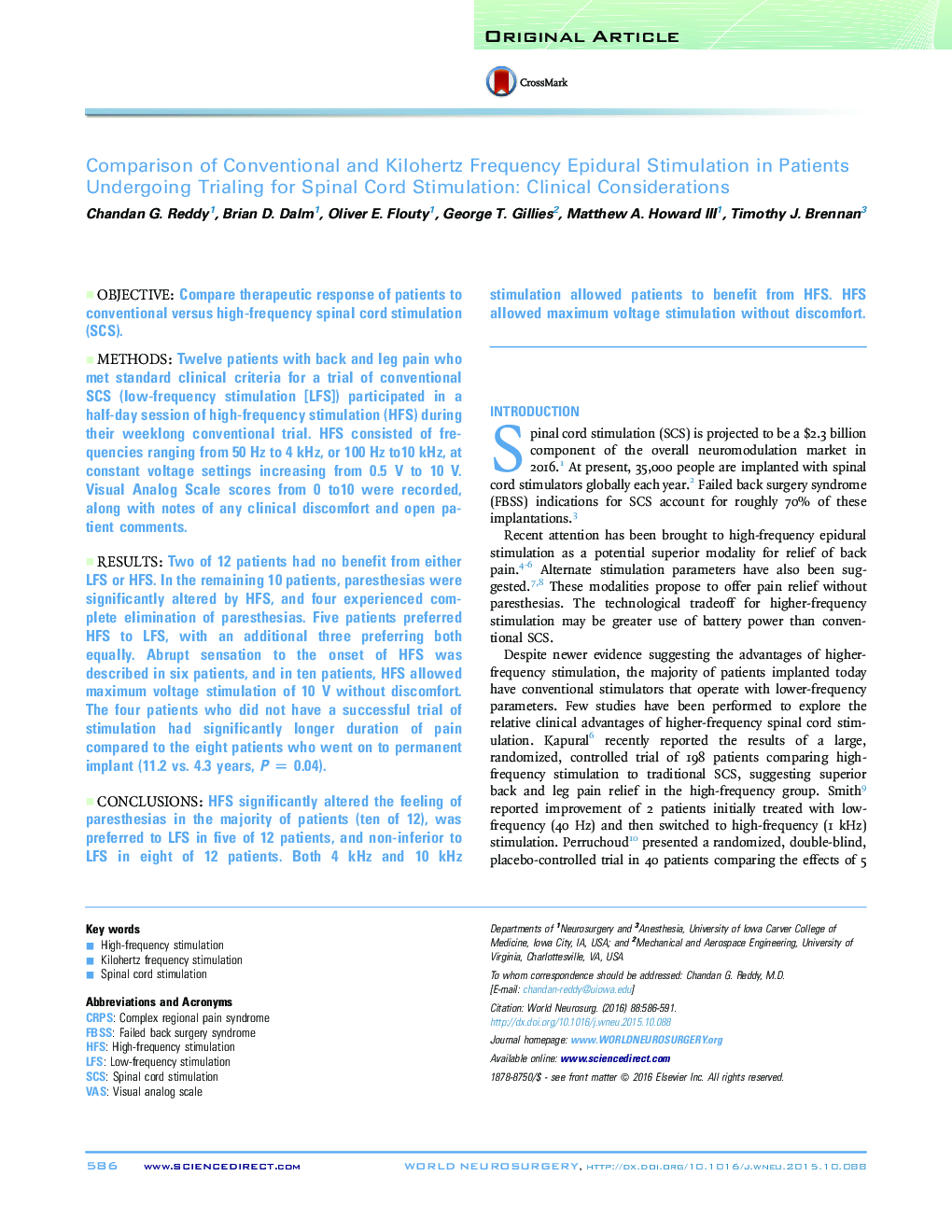| Article ID | Journal | Published Year | Pages | File Type |
|---|---|---|---|---|
| 6044329 | World Neurosurgery | 2016 | 6 Pages |
ObjectiveCompare therapeutic response of patients to conventional versus high-frequency spinal cord stimulation (SCS).MethodsTwelve patients with back and leg pain who met standard clinical criteria for a trial of conventional SCS (low-frequency stimulation [LFS]) participated in a half-day session of high-frequency stimulation (HFS) during their weeklong conventional trial. HFS consisted of frequencies ranging from 50 Hz to 4 kHz, or 100 Hz to10 kHz, at constant voltage settings increasing from 0.5 V to 10 V. Visual Analog Scale scores from 0 to10 were recorded, along with notes of any clinical discomfort and open patient comments.ResultsTwo of 12 patients had no benefit from either LFS or HFS. In the remaining 10 patients, paresthesias were significantly altered by HFS, and four experienced complete elimination of paresthesias. Five patients preferred HFS to LFS, with an additional three preferring both equally. Abrupt sensation to the onset of HFS was described in six patients, and in ten patients, HFS allowed maximum voltage stimulation of 10 V without discomfort. The four patients who did not have a successful trial of stimulation had significantly longer duration of pain compared to the eight patients who went on to permanent implant (11.2 vs. 4.3 years, P = 0.04).ConclusionsHFS significantly altered the feeling of paresthesias in the majority of patients (ten of 12), was preferred to LFS in five of 12 patients, and non-inferior to LFS in eight of 12 patients. Both 4 kHz and 10 kHz stimulation allowed patients to benefit from HFS. HFS allowed maximum voltage stimulation without discomfort.
